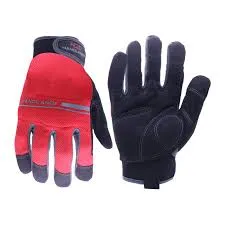Top Choices for Safe and Durable Forest Apparel
The Importance of Best Forest Safety Clothing
When it comes to working in the great outdoors, particularly in forested areas, safety should always be the top priority. The right forest safety clothing is crucial not only for protection against the elements but also for safeguarding against potential hazards that can occur in environments filled with heavy machinery, unpredictable weather, and natural obstacles. This article delves into the essentials of forest safety clothing and its importance in ensuring the safety of workers and outdoor enthusiasts alike.
Understanding the Risks
Forests can be beautiful yet dangerous places. Workers engaged in logging, forestry management, or wildlife conservation often face multiple challenges, including falling branches, sharp tools, insect bites, and adverse weather conditions. Therefore, it is imperative to wear clothing that provides adequate protection. Good forest safety clothing can prevent injuries and make a significant difference in emergency situations.
Key Features of Forest Safety Clothing
1. Durability and Strength Clothing made from strong, abrasion-resistant materials is essential in a forest environment. Fabrics like Cordura or heavy-duty nylon can withstand the rigors of outdoor work, providing extra protection against cuts and scrapes.
2. Visibility High-visibility clothing is a crucial component of forest safety. Bright colors like neon orange or yellow make workers more noticeable, especially in crowded or low-visibility situations. This can be essential for preventing accidents involving vehicles or machinery.
3. Weather Resistance Forests often expose workers to variable weather conditions, including rain, wind, and extreme temperatures. Waterproof and insulated clothing, such as jackets with breathable membranes, helps keep workers dry and warm. Additionally, this type of clothing allows moisture to escape, preventing overheating during physical activity.
best forest safety clothing

4. Comfort and Fit Comfort is vital when working long hours in the forest. Clothing should allow for freedom of movement and should not restrict physical activity. Look for garments designed with ergonomic shaping and stretchable materials that provide comfort without compromising safety.
5. Protective Gear Beyond basic clothing, various protective gear pieces should be considered. Hard hats are essential for protection against falling objects, while gloves can protect hands from cuts and scrapes. Safety goggles and hearing protection are also crucial, especially in areas with heavy machinery.
6. Layering System A layering system is beneficial for adapting to changing weather conditions. Moisture-wicking base layers keep the skin dry, insulating mid-layers trap warmth, and waterproof outer layers protect against wind and rain. This system ensures that workers can adjust their clothing according to their level of activity and the weather.
Compliance and Standards
In many regions, forest safety clothing must comply with specific standards and regulations. It’s important to choose gear that meets these standards to ensure optimal safety. Workers should also be educated about proper clothing maintenance, ensuring that protective qualities remain intact over time.
Conclusion
In conclusion, investing in the best forest safety clothing is a critical step for anyone working or spending extended time in forested areas. Not only does it provide protection against a myriad of hazards, but it also enhances comfort and performance. By prioritizing safety through proper clothing, workers can mitigate risks, allowing them to focus on their tasks while enjoying the beauty and serenity that nature offers. Whether you’re a professional forester or an outdoor enthusiast, don’t underestimate the importance of equipping yourself with the right safety clothing for your adventures in the great outdoors.
-
Wholesale Safety Helmets - Cheap OEM Supplier China Manufacturer
NewsMay.30,2025
-
Top Safety Helmet Manufacturers in Japan - Durable & Certified
NewsMay.30,2025
-
Affordable 3M Safety Helmets in Pakistan Bulk Pricing & Factory Deals
NewsMay.30,2025
-
Affordable HDPE & EN397 Hard Hats - Safety Certified, Bulk Deals
NewsMay.29,2025
-
FDA-Compliant Food Safety Clothing Suppliers Health Dept Approved
NewsMay.29,2025
-
adidas safety clothing
NewsMar.07,2025
